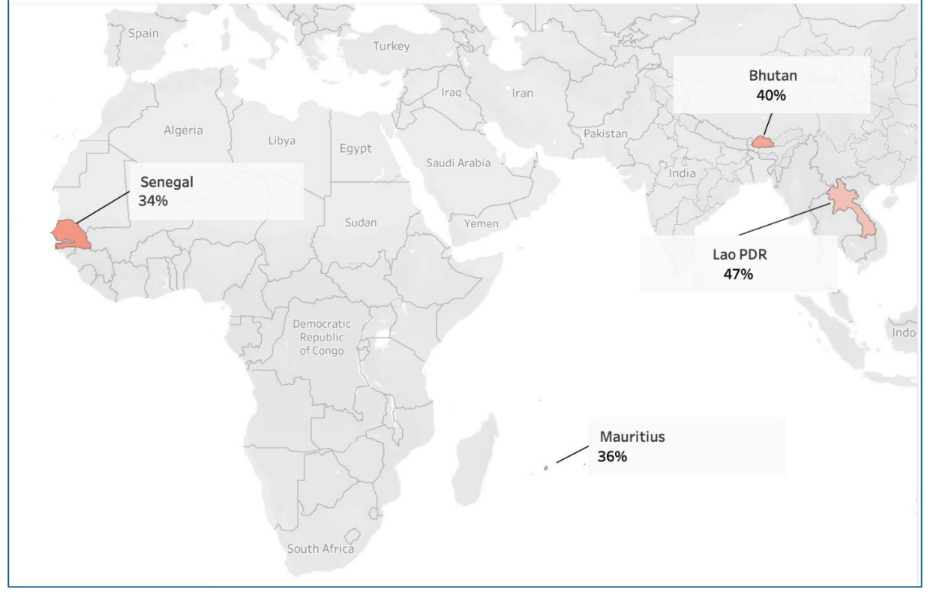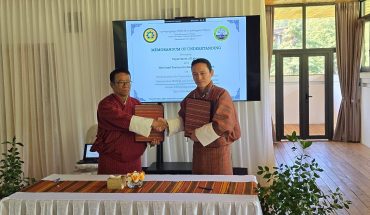
Bhutan, Laos, Mauritius, and Senegal advance gender equality in public administration
NGAWANG JAMPHEL
Thimphu
Bhutan, along with Lao PDR, Mauritius, and Senegal, has been working to enhance women’s leadership in public administration under a UN-led initiative aimed at promoting gender equality in governance.
The project, Building Capacities for Promoting Women’s Presence and Leadership within Public Institutions at National and Local Levels, was implemented by the United Nations Department of Economic and Social Affairs (UN DESA) in collaboration with other UN agencies from 2022 to 2024.
This initiative aligns with Sustainable Development Goals (SDGs) 5 and 16 which emphasize gender equality and inclusive decision-making. The project helped the four nations develop national action plans to address barriers preventing women from advancing to leadership positions in the civil service.
Despite existing legal frameworks, many challenges remain, including policy gaps, limited implementation, workplace biases, and insufficient infrastructure supporting women in leadership roles.
At the start of the project in 2022, all four participating countries had varying levels of gender representation in public administration. Lao PDR had 17% women in leadership roles, Bhutan 20%, Senegal 31%, and Mauritius 39%.
With the global average standing at 31%, three of these nations fell below this mark. Despite nearly half of the global civil service workforce being women, their underrepresentation in senior roles highlights structural and societal challenges.
A 2023 review identified key barriers to women’s leadership in public administration across the four countries. While laws promoting gender equality existed, their enforcement was weak, and they often lacked provisions specific to the civil service.
Gender infrastructure in key agencies was also found to be inadequate, with limited resources, low technical capacity, and weak autonomy. Coordination issues between institutions further complicated gender equality efforts.
Accountability mechanisms, including reporting structures and enforcement of gender-sensitive policies, were also found lacking. The report added that many nations did not have clear quotas or affirmative action measures to improve recruitment and promotion of women.
It further states that gender-neutral human resource policies failed to address the specific needs of female civil servants, with unclear promotion criteria, persistent pay gaps, and a lack of career advancement opportunities cited as key concerns.
Additionally, poor work-life balance hindered women’s professional growth. Inadequate childcare facilities and maternity leave policies created obstacles for working mothers. Workplace harassment remained an issue, with few countries having proper training or reporting mechanisms to address it.
A critical shortfall was the lack of gender-disaggregated data, which made it difficult to track women’s participation and progress in public administration. Many agencies lacked the technical expertise to collect, manage, and analyze gender-related data, further impeding policy interventions.
Social norms and stereotypes also played a significant role in limiting women’s career growth. Cultural expectations around family responsibilities often restricted women from pursuing leadership roles, and traditional biases continued to favor men in decision-making positions.
In addition, many women hesitated to seek promotions due to ingrained societal perceptions about female leadership.
In response to these challenges, Bhutan, Lao PDR, Mauritius, and Senegal developed comprehensive action plans outlining legal reforms, gender-responsive policies, and institutional changes to promote women’s leadership.
One of the key areas of focus was policy and legal reform. The action plans proposed strengthening gender equality provisions within civil service rules and introducing executive orders, administrative decrees, and other measures to improve implementation.
Training programs, workshops, and awareness campaigns were recommended to increase understanding of gender issues within public administration.
To enhance gender infrastructure, the plans proposed strengthening gender units within government institutions, improving coordination among various agencies, and establishing clear accountability frameworks.
A second area of focus was human resource policies. The action plans included gender-sensitive recruitment strategies and temporary special measures to increase women’s participation in leadership roles.
Recommendations also included competitive recruitment exams, balanced selection committees, and promotion policies that explicitly support gender equality.
Work-life balance initiatives were another priority. The plans suggested expanding childcare facilities, introducing flexible work arrangements, and improving maternity and paternity leave policies.
Furthermore, leadership training and capacity-building programs were designed to equip women with the necessary skills to advance in public administration, particularly in traditionally male-dominated fields like information technology.
Harassment prevention mechanisms were also included in the action plans, calling for sensitization programs, clear reporting procedures, and the development of harassment manuals for government institutions.
A third key focus was improving data collection and monitoring. The action plans emphasized the need for better gender-disaggregated data to track women’s participation at all levels of public administration.
Proposed measures included creating national databases, training officials in data management, and improving monitoring systems to assess progress on gender equality goals.
Despite strong commitments, several challenges remain in implementing these action plans effectively. Some countries’ plans lack clear targets and accountability measures, making it difficult to track progress. Issues such as the gender pay gap, work-life balance, and leadership training require more concrete solutions.
Social norms and deeply ingrained biases toward women in leadership continue to be obstacles. The report states, “While policies and training programs can promote gender equality, cultural shifts take time and require long-term commitment.”
It also adds that public awareness campaigns and media strategies are necessary to challenge stereotypes and promote women’s leadership.
Additionally, coordination between national and subnational levels needs improvement. Some governments have demonstrated strong political commitment, but others require more clarity in institutional roles to ensure effective implementation of gender policies.
Experts suggest that political will is crucial for the long-term success of these action plans. Governments, civil society organizations, and international partners must collaborate to ensure that gender equality measures are effectively implemented.
The report also emphasizes that clearer roles and stronger coordination mechanisms at national and local levels are essential for sustaining progress.
“Public awareness campaigns should be prioritized to challenge traditional gender roles and encourage women to take on leadership positions. Schools, media, and community organizations can play a role in shifting societal attitudes,” the report states.
The initiative also recommends that governments must explore long-term financial strategies, including reallocating national budgets and securing support from development partners. “Embedding gender equality measures into national financial plans can help ensure continued investment in these initiatives.”
Meanwhile, the report highlights that regular reviews and assessments should be conducted to track progress and identify areas that need improvement.
“Governments should also focus on strengthening gender data collection and monitoring systems to ensure that policies are backed by accurate and reliable information,” it recommends.
Bhutan, Lao PDR, Mauritius, and Senegal have taken significant steps toward increasing women’s leadership in public administration, but challenges remain.
“While national action plans provide a roadmap for gender equality, effective implementation requires sustained political commitment, financial support, and cultural change.”





